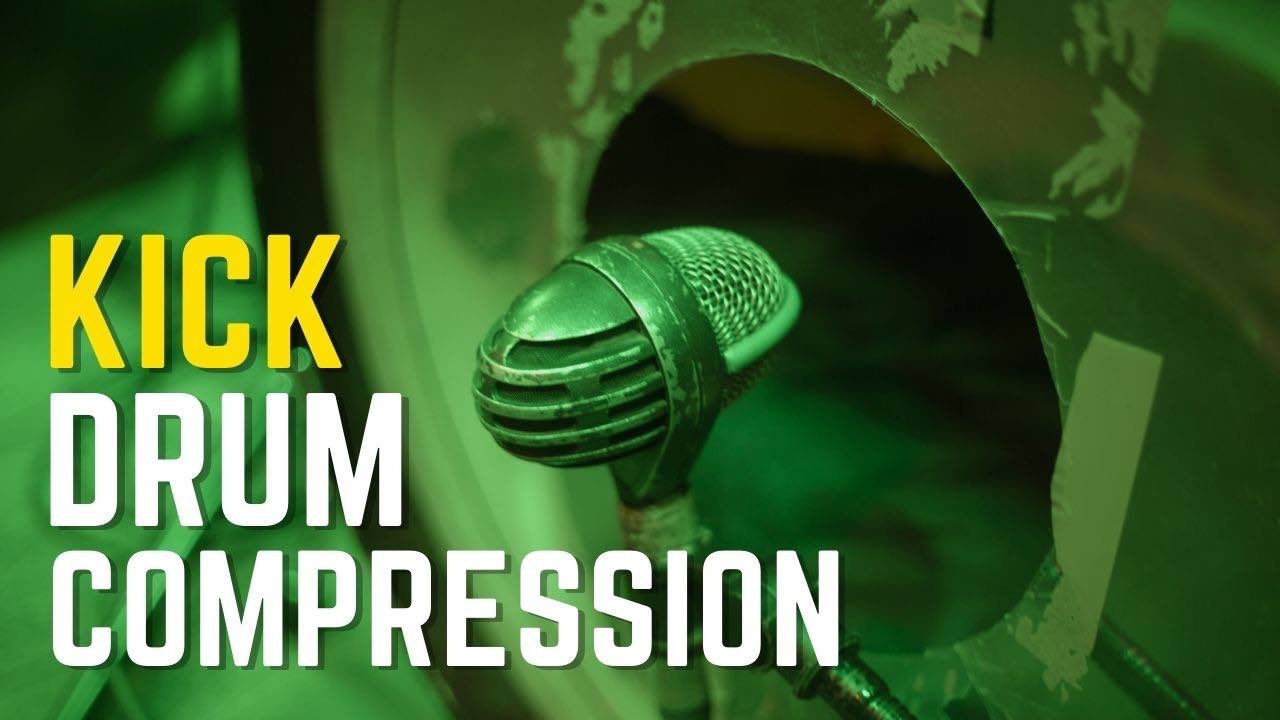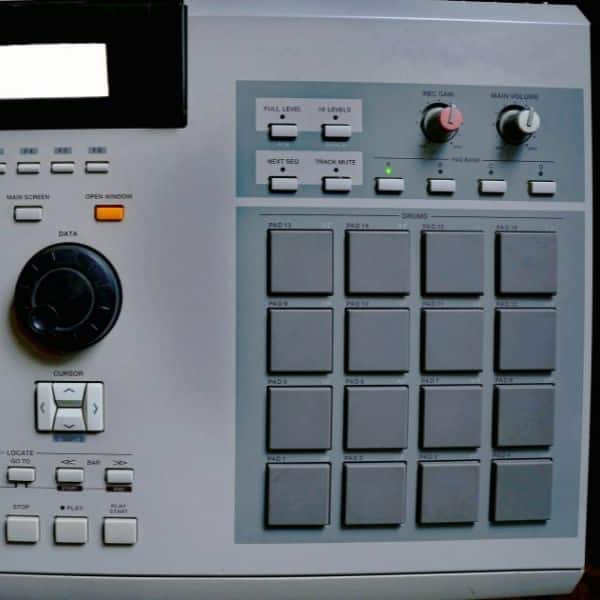Kick Drum Compression Settings & Tutorial

Even once you’ve shaped and EQed your kick drum track, you may still not be happy with how it’s sitting in the mix.
This is the point where compression comes in.
The dynamic range of your kick drum will have a MAJOR impact on your mix. Very similar to bass, you want the low-end on your kick drum to have as much consistency as possible. Of course, compressing a kick drum can be an absolute nightmare if you don’t know what you’re doing, which is why we made this helpful guide!
Note: This article may contain affiliate links, meaning I would receive a commission - at no cost to you - for any products you purchase.
Should You Compress Kick Drum?
You should absolutely compress your kick drum.
Consistency is important in modern music, and no part of the spectrum requires consistency, quite like the low-end. When you compress your kick drum, you create a punchy, low-end consistency that can act as a foundation for the rest of your track.
Unfortunately, it’s very easy to overdo compression, which is why so many new producers and mix engineers shy away from it.
How Do You Compress a Kick Drum For Punch?
Even with a single dB of compression, you can get your kick drum to punch through the mix. The key is to get the settings right, and the most important setting to focus on is the attack of the compressor.
If you want a punchier kick drum, you want your transients to be able to poke through. If the attack setting is too fast, the compressor will clamp down on your transients, removing punch from your kick drum. However, with a slow attack setting, you can allow the transient through before your compressor start working, which accentuates the punch.
You’ll also want to make sure your release setting is fairly fast so that your compressor doesn’t remain clamped down on your kick drum for too long, especially if you want it to feel tight and punchy.
Kick Drum Compression Attack/Release Settings
When setting attack and release settings on my compressor, I like to think of the natural envelope of my kick drum. A kick has a very quick transient, which I typically want to accentuate (or at least retain). For this reason, I’ll use a medium to slow attack time. This is especially true in rock, metal, hip-hop, or EDM tracks, where I need that punch to help the kick cut through the mix.
However, there are certainly times when my kick drum feels too punchy for the mix. One of the best ways to remedy this is by speeding up the attack. In doing so, you can tame the transient a bit. To do this, you’ll need a compressor that can catch fast transients well, such as an 1176-style compressor (I recommend Arturia's CompFET 76 emulation).
The release time should be fairly fast. The idea here is that the compressor is switched off before the next kick drum hits. While the release control needs to be snappy, you don’t want to take it so far that you get distortion or strange artifacts.
I typically like to set it so that I can see the needle or meter bounce back to zero before the next kick drum sounds.
Best Kick Drum Compression Ratio Setting
A good place to start with a kick drum (or just about any drum) is 4:1. This ratio should give you the control you need to create a punchy and consistent kick drum. But, of course, there are some cases where you’ll have extremely dynamic drums that need a higher ratio setting.
In those cases, you can go for a 5:1 ratio or higher.
How Do You Compress Kick and Bass

Long ago, I learned the value of compressing my kick and bass together. The beauty of doing this is that it can glue your low-end together. The key here is to compress them together in parallel.
Remember, a kick is a percussive instrument, while the bass is a melodic instrument. Therefore, they will require different compression settings on their own to gel well with the rest of the mix, though using parallel compression is a wonderful way to get them sitting well together!
I’ll typically send my kick and bass to an aux track with a compressor that has a fast attack and release settings, dipping the threshold, so there is a fair amount of compression. Then, I will subtly mix that ultra-compressed sound in with the rest of my track.
When To Use Sidechain Compression
Sidechain compression can be beneficial if other elements are masking the kick, such as the bass.
For example, you could place a compressor plugin on your bass synth and sidechain it to your kick. This way, every time the kick hits, the compressor will duck the bass down for a split second to allow the kick to punch through.
Unless I’m trying to be super obvious about my sidechaining (like many EDM artists), I will try and keep the settings subtle. I typically like a pretty fast attack and release, a ratio of about 5:1, and anywhere from 2 to 4dB of gain reduction.
Hip Hop Kick Drum Settings

In most cases, hip-hop producers will use pretty heavy compression settings. Ratios of 7:1 to 8:1 are pretty standard. It’s also not uncommon to see up to 10dB of compression on a kick drum to make it punch.
Of course, the settings depend on the kick drum. Some kicks won’t need compression to punch through the mix, and a sampled boom-bap kick will require far different settings than a digital 808 kick.
Also, some samples you use will already be heavily compressed! You may not actually need to use any compression, because it's already been applied. Be sure to use your ears.
EDM Kick Drum Settings
EDM kicks NEED punch. I often go with a 5:1 to 6:1 ratio with a slow attack to allow the transient to pop through and a fast release so that the compressor doesn’t hold onto the kick for too long.
I’ll often adjust the gain reduction so that I’m getting anywhere from 6 to 8dB of compression.
Parallel Compression on the Kick Drum
Parallel compression is a great way to get a fat, punchy, and consistent sound without sacrificing the dynamics of your original sound. There are two ways I like to approach parallel compression.
I’ll often use a slow attack and fast release time on my parallel compressor if I want more punch, setting my threshold so that I’m getting anywhere from 6 to 18dB of gain reduction.
However, there are times when I want a bit more fatness in my drums. In that case, I’ll set my release time so that it accentuates the sustain of my kick. A slower release setting in parallel is a great way to beef up an otherwise thin kick drum.
If you want to learn more about drum compression in general, check out this article on 9 powerful drum compression techniques.
Best Compressor for Kick Drum - Waves API 2500
The Waves API 2500 is an emulation of one of the most versatile VCA compressors of all time. This unique compressor can be used to deliver everything from clean, neutral compression to pumping and punchy parallel insanity. It's also incredibly affordable when it's on sale!
The API 2500 delivers selectable ratios, variable time controls, a thrust detector for adding a high-pass at the detector circuit, and much more. With the proper settings, this compressor can work wonders on your kick and is especially useful as a drum bus compressor!
Learn more about Mixing with Compression
This is only one part of mixing with compression! Luckily, I've put together a bunch more articles to help you master this crucial mixing skill!
- How to Use a Compressor: Learn to Mix with Compression Quickly!
- Sidechain Compression Explained for Beginners & Key Settings
- 3 Tips for Using a Sidechain Compressor to Add Punch & Clarity
- Multi-band Compression Tutorial for Great Vocals, Drums & More!
- How to Use Mid-Side Compression for Amazing Recordings!
- How to Use Parallel Compression for Powerfully Punchy Mixes
- Should You Compress Reverb? The Real Answer Finally Revealed.
- The 5 Types of Compressors (And Exactly When To Use Each)
- 10 Vocal Compression Mixing Tips (Including Best Settings)
- 9 Powerful Drum Compression Techniques for Punchy Pro Mixes
- Loud, Punchy Kick Drums with these Compression Settings
- How to Compress Snare - Use *These* Settings Punchy Snares
- Exactly How to Compress Bass for Tight Low End Thump!
- How Compress Acoustic Guitar Perfectly, Every time
- How to Compress Synthesizers: Best Compressor Settings for Synths
- How to Compress Organ: 4 Steps to a Great Mix!
- How to Compress Percussion: Compression Settings for Everything
- How to Compress Strings: 8 Magic Settings You Need to Know
From a Frustrated Producer in a Ragtag Bedroom Studio to Major Placements on TV Earning $1,000s!
My name is Evan, and I've been making music since around 3rd grade. I'm from San Diego, California, but I've lived in Washington, DC for the last 20 years.
While I still have a full-time day job, I have created systems that have allowed me to produce dozens of songs a year in my spare time.
My songs have been on Netflix, TV shows like the 90 Day Fiance, an award-winning indie film, and NPR’s “All Thing Considered.” They've also been streamed millions of times.
In addition to being a music producer, I am passionate about teaching people how they can make professional-sounding music and earn money licensing it, all in their spare time.
Thousands of musicians, like yourself, have trusted me to guide their musical journey. My YouTube videos have been watched nearly a million times. And my story has been in Forbes, Side Hustle Nation, and the Side Hustle School.






